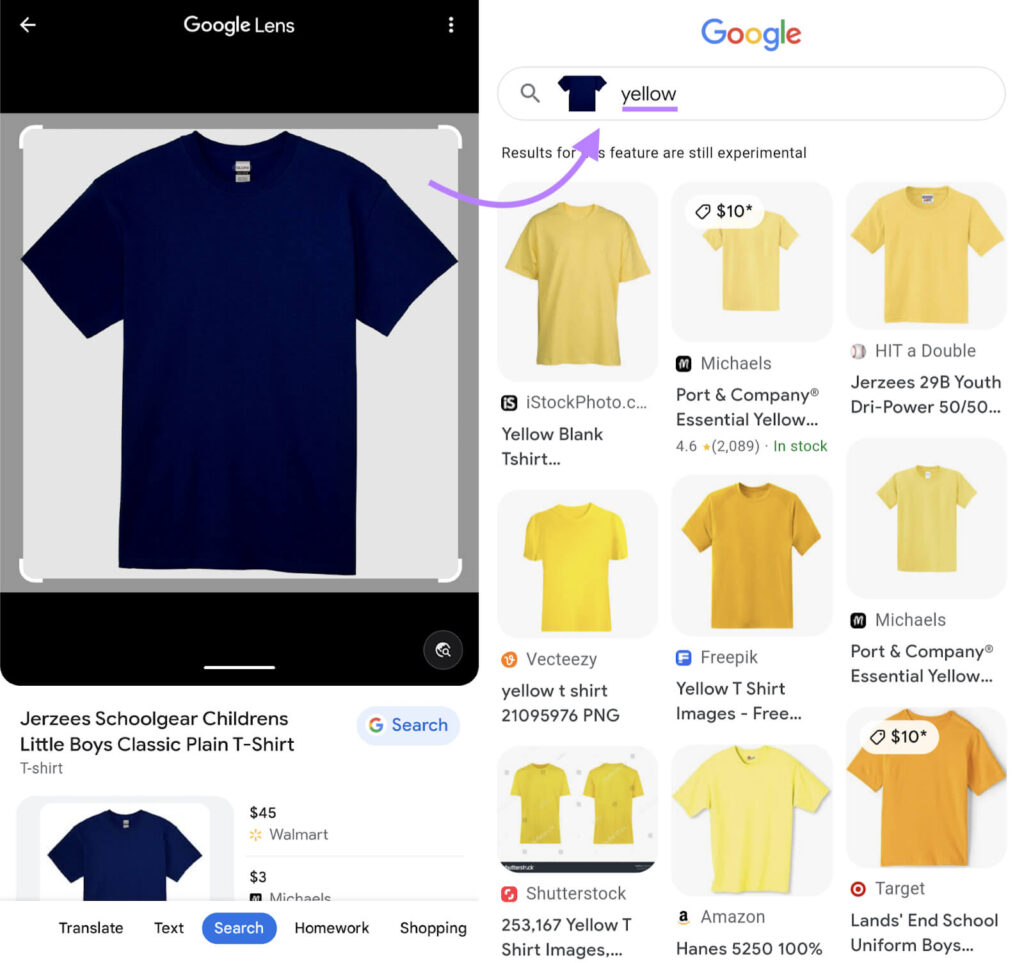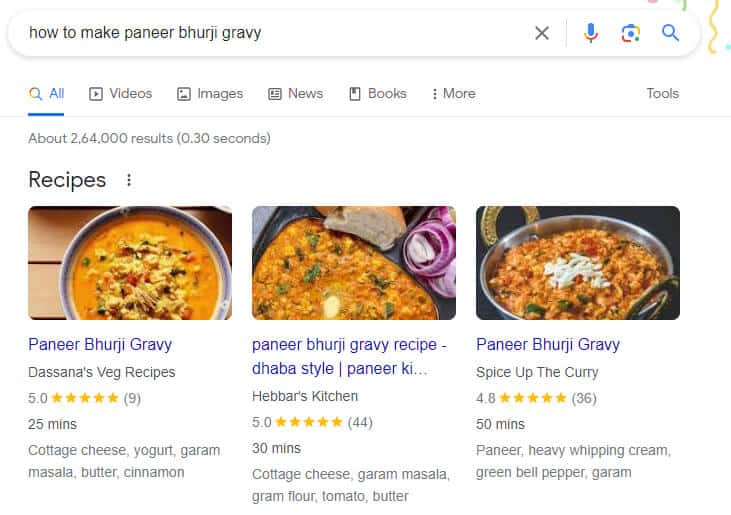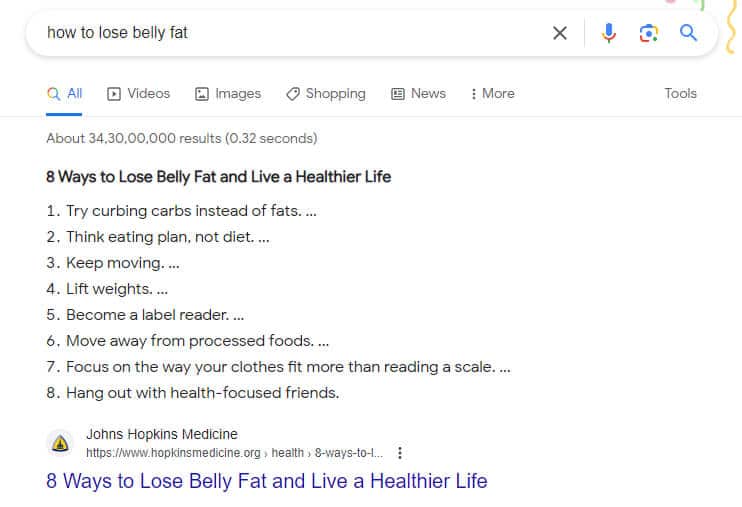Staying on top of SEO trends is a lot like aiming at a moving target. Things keep changing, from how search engines work to new ideas popping up.
Even though the main aim of SEO stays the same—to help people find you in online searches—the ways to do it keep changing.
In this article, we’ll talk about the main problems marketers face in SEO in 2024 and the 20 most important things to pay attention to this year.
SEO Challenges in 2024
We’ve found out the top three challenges of SEO marketing in 2024:
Changes in Algorithms
The biggest challenge marketers face is keeping pace with algorithm updates. This isn’t surprising. In just 2021, Google conducted over 800,000 experiments resulting in more than 4,000 alterations to search protocols.
For many marketers, this statistic can seem overwhelming. How can one succeed when Google keeps changing the rules?
Firstly, it’s crucial to stay informed about industry updates. When there’s a significant alteration in algorithms, the SEO community often discusses it.
The second approach might seem counterintuitive: It’s about waiting until the commotion settles following an update.
Why? Sometimes, Google realizes that a change hasn’t worked out as planned, prompting them to revert to the previous version.
Struggling to Rank
SEO isn’t a quick fix; it’s a gradual process. Unlike paid ads, organic results takes time to show the result. It’s more like a slow-growing investment, not the rapid changes of the stock market. This analogy can be useful when clients seek immediate outcomes.
To improve low rankings, marketers need to focus on technical SEO and content marketing. Yet, creating an effective marketing strategy should include 3-4 important methods that works.
Understanding Keywords
Keywords are the backbone any SEO campaign. However, Google now analyzes websites comprehensively, considering their overall tone, breadth, and relevance, rather than solely focusing on individual keywords.
Keyword stuffing is no longer effective. The emphasis you should focus on solving users’ problem and understand user intent. Understanding intent you can do perform keyword research and create content that satisfy both users and search engine.
Explore this informative article for insights on integrating user intent into your keyword strategy.
20 SEO Trends for 2024
Following are the upcoming SEO trends to follow in 2024 to make a successful SEO campaign.
AI Transforming Search Queries
Artificial Intelligence (AI) is reshaping SEO, simplifying searches by generating content responses.
Generative AI crafts summaries in response to queries, show at the top of search results. Microsoft’s Bing integrated ChatGPT into its engine, allowing AI-generated responses. Google follows suit with AI chatbot Bard and the Search Generative Experience (SGE).

This shift affects user behavior. If queries are resolved in the summary, site visits may decrease. However, for complex queries, users want authoritative sources for detailed insights and may click through.
Optimizing for generative AI is evolving. Valuable, insightful content addressing search intent still attracts traffic. Being mentioned in AI-generated summaries, as Bing credits sources, provides visibility and potential clicks.
To feature in AI-generated summaries, consider relevance, content quality, and website authority—factors Bing and Google’s SGE likely prioritize.
AI Copywriting Tools Will Fasten Content Creation
AI isn’t just revolutionizing search engine results; it’s an entire suite of copywriting tools amplifying content creation efforts.
AI writing software use machine learning and natural language processing (NLP) to produce diverse content, including ads, blog posts, and other forms of content.
Content teams use AI streamlining content creation, do research, and make blog outline increasing their productivity.
For SEO (Search Engine Optimization) purposes, machine translation software can be used to quickly translate content into multiple languages, thereby increasing the reach and visibility of a website or online platform in different regions.
However, you shouldn’t completely rely on AI-generated content as it may lack accuracy or timeliness. Do your research and make sure your published content aligns with your brand and is fact-checked.
Tools like SEMrush AI Writing Assistant, ChatGPT, Jasper AI, and Copy.ai are good options. SEMrush AI Writing Assistant helps in blog post creation, title ideas, and more.
Using the SEMrush AI Writing Assistant, you can:
- Access the ‘Article Generator’
- Choose language, add a title and target keywords, and input article subheadings
- Click ‘Generate’ to obtain text that serves as a foundation for your blog post. Then, edit and expand on this content as needed.
Advancements in Visual Search
Users are now using alternative search methods. According to Insider Intelligence, 30% of Americans under 34 are using visual search for shopping.
Visual search provides image-based information than text.
With Bing Visual Search users can find information or images uploading images in it. Google also has similar features Google Lens.
Google introduced Multisearch, enabling text, voice, and image-based searches in 2022:
Multisearch combines different search modes, enabling, for example, searching for a yellow shirt using a blue shirt image.

Google Lens handles 10 billion monthly searches (up from 3 billion in 2021), indicating the rise of visual searches. Optimizing images is important when you are targeting visual search users and improving SEO.
Following are the image SEO best practices to appear in Google Lens queries:
- Accurate Representation: Show products accurately in images to match search queries.
- High-Quality Images: Use high-resolution images showcasing products effectively.
- Optimize File Names and Alt Text: Use descriptive file names and alt text for context.
- Structured Data: Implement structured data to enhance content understanding for search engines.
Microsoft Bing’s Rise Against Google
Microsoft Bing rapidly gained 100 million daily users post-ChatGPT integration, making it the second-largest traditional search engine worldwide, following Google.
Despite Bing’s exponential growth, Google maintains over 1 billion daily users, ensuring its market dominance remains unchallenged.
Nonetheless, Microsoft’s strides in AI position Bing as a formidable Google competitor.
Google’s dominance in search faces competition as Bing emerges as a viable alternative. SEO may diversify beyond reliance on one search engine.
You should optimize your site for Bing search, if you’re targeting Millennials.
Data from One2Target shows over 60% of Bing users fall in the 25-34 age group.

Optimization Tips for Bing:
- Use exact match keywords: Bing benefits from precise keywords, unlike Google, which handles synonyms well. Use Bing Webmasters tools for keyword research.
- Embrace multimedia: Bing emphasizes video content more than Google in many SERPs.
- Social signals matter: Bing considers social media presence, so prioritize a strong online brand presence and content sharing on social platforms
Enhanced User Experience Influences Rankings
Google values user experience. And, Core Web Vitals metrics making sure each website focuses on user-experience.
Coming March 2024, Google will introduce Interaction to Next Paint (INP), replacing First Input Delay (FID). INP measures the webpage’s responsiveness upon user interactions, like clicking a button, gauging the time between initiation and visual feedback display.
Google recommends an INP value ideally around 200 milliseconds or less for optimal performance. They offer a guide on optimizing for INP.
Google understands users likes swift, navigable, and easy to accessible sites, therefore, technical SEO and user experience will be the most important SEO trends in 2024.
When doing technical SEO audit, make sure webpages loads fast and provide user experience. You can use Site Audit tool like SEMrush or Ahrefs to check site health and other relevant metrics:
- Open the tool, input your site, and initiate the audit.
- Configure settings and start the audit.
- Access the dashboard displaying site health and Core Web Vitals metrics.
- Review Core Web Vitals details in the report.
- Navigate to the ‘Issues’ tab for a comprehensive list of areas needing attention.
Voice and Mobile Search
Voice search is on the rise, becoming a common way for people to find information. By 2026, over half of US internet users are expected to use voice assistants regularly.
Voice search is now becoming a part of our lives. How do we optimize content for those who search with their ears, not eyes?
The solution is clear: Work on mobile optimization. Since most voice searches happen on mobile devices, Google favors mobile-friendly sites with speedy performance.
Another way – revise content to address common user queries. Identify long-tail question keywords and incorporate them into H2 or H3 headers.
Enhanced Page Headers
Google introduced Passages in 2021, allowing ranking of specific sections of a page independently. Rather than ranking an entire page, Google now assesses relevance within sections.
You shouldn’t worry about it if your pages are well-structured. However, it’s beneficial to refine page headers for better context in different sections. This helps Google in understanding your content even without specific markup.
Remember, other ranking factors like backlinks, SEO-focused content, and other strategies still important.
Local SEO Strategy
While targeting broad keywords seems appealing, competing with global brands is tough. However, specializing in local SEO can offer an edge.
You should begin with a local SEO audit. Next, optimize your site for local, specific, long-tail keywords, update Google My Business and local listings, add visuals, and craft city-specific content.
Millennials, with 42% frequently visit businesses after a local search.
Online reviews also impact organic search results. About 63.6% of consumers check Google reviews before visiting a location.
Encourage customers to leave reviews on your site or through Google My Business.
Don’t overlook mobile optimization. 57% of local searches happens through mobile devices or tablets. Providing mobile-friendly content ensures quick access to solutions when users need them most.
Understanding Search Intent
Great content isn’t for search engines; it’s for your audience.
Search intent focuses why individuals search and what they seek when entering queries.
What solutions they are looking for when they type keyword in Google?
Are they seeking product insights, educational resources, or specific information?
Addressing user search intent means crafting content that directly addresses their queries and solves their problems.
There are four main types of search intent:
- Navigational: Users seeking a specific website or page, e.g., searching for “Amazon.”
- Informational: Users want more insights on a topic, like searching for “features to look for in a mixer.”
- Transactional: Users ready to make a purchase or take action, e.g., searching for “order Black and Usha mixer online.”
- Commercial: Users comparing products or services before buying, such as searching for “best mixer under $100.”
Create content that aligns with user queries and expectations, than doing keyword optimization.
Compelling Headlines with Emotion
Ever clicked on an irresistible headline? Research reveals a formula for clickable titles. Backlinko analyzed 5 million headlines and found that emotional titles—either positive or negative—achieved higher click-through rates than neutral ones.
Headlines with a positive sentiment had a 7.4% higher CTR, while those with a negative sentiment had a 7.2% higher CTR.
However, there’s a limit to how far emotionally-charged titles can drive clicks. Overdoing it leads to clickbait territory. The study also noted that ‘power words,’ designed to grab attention, can negatively impact CTR.
Terms like ‘unbelievable,’ ‘insane,’ and ‘crazy’ might work on social media but can impact organic CTR. Use them wisely.
Video in Search Results
You might have noticed YouTube videos in Featured Snippets, especially for ‘how-to’ searches seeking step-by-step guidance.
For instance, a search like ‘how to make paneer bhurji gravy’ leads to a relevant video:

Video snippets are just the start. We anticipate Google will further integrate video into search results. Hence, optimizing your videos for search becomes crucial.
Here are some tips:
- Add chapters to your YouTube videos, organizing content by topics for better context and snippet use.
- Incorporate closed captions (CC) to ensure accurate content understanding.
- Optimize titles, tags, and descriptions akin to webpage SEO practices.
- Embedding videos in your website and blog posts can enhance user engagement.
Optimizing Content for ‘People Also Ask’
You might have noticed ‘People Also Ask’ (PAA) while using Google. In fact, 43% of search queries now includes People Also Ask box.
You might want to get your website in PAA box – however, you can achieve that by making some changes in your content.
PAA boxes often start with question words like ‘what,’ ‘why,’ and ‘when.’ Incorporating such questions and answers into your content will be helpful.
Use a keyword research tool to find long-tail question keywords and integrating them into page headers. You can also add an FAQ section at the end of web pages – it will summarizes key points and also offers SEO advantages.
AI-Generated Content
AI writing tools like Jasper and Copy.AI gained attention recently, but none skyrocketed like ChatGPT.
ChatGPT, now the fastest-growing consumer app, helps create human-like copy. In response, Google introduced Bard, its AI chatbot, in February 2023.
While Google aims to improve user-focused content, the question arises: How much should you rely on AI?
The answer is simple: Use AI to speed up tasks but don’t entirely replace human input.
Generating lengthy content solely through AI might not meet quality standards. Instead, leverage AI for FAQs or general content, filling gaps with human insights.
You should use AI for research or content summarization or repurpose existing content for different channels like social media, infographics, etc.
However, AI with human writers who can edit and contribute valuable insights in the content creation process.
Featured Snippets and Zero-Click Results
Last week, I should work on my belly fat, I Googled ‘How to lose belly fat’ The answer? A John Hopkins Medicine featured snippet — no clicks needed.

About 12.29% of search queries display featured snippets, and two-thirds of Google searches end without clicks. The competition for zero-click search results intensifies.
To secure the featured snippet spot, here are five tips:
- Optimize with relevant keywords, including primary and related ones.
- Structure content with headers (H2, H3) for easy crawling.
- Keep answers concise, ideally within 40-60 words, especially under a ‘what is’ header.
- Use lists, steps, recipes — in a numbered format, to get snippets.
- Format content resembling a snippet—tables, images increase chances.
Build Topical Authority
Would you trust a website covering 50 different topics or one focused on just a few?
Second one, right? And that’s why topical authority matters.
Topical authority signals to search engines how deeply and well you cover specific subjects. Focusing on a specific niche shows Google the expertise and reliability of your site.
This expertise gains importance due to Google’s focus on valuable content. Topical authority helps the algorithm recognize valuable content worth ranking higher.
To establish authority:
- Create topic clusters — focus on specific subjects, research related terms, and craft content for each cluster.
- Target multiple keywords simultaneously to enhance online authority. Connect content within a topic, interlink related pages, and cross-link between clusters.
For instance, to rank for ‘On-page SEO,’ develop content around clusters like ‘Keyword Research,’ ‘On-page SEO best practices,’ and ‘how to write optimized article.’
Building topical authority takes time but pays off in the long run.
Real Experience Matters
Ever read something and felt the person had no clue? That’s likely because they lacked firsthand experience, and Google’s addressing that.
In December 2022, Google updated its E-A-T algorithm, adding ‘Experience’ to ‘Expertise, Authority, Trust.’ This E-E-A-T algorithm now considers the creator’s firsthand experience while evaluating content quality.
Unique perspectives—original data, unconventional views, expert-driven content, or diverse perspectives like consumer reviews—will gain importance.
Such insights are hard to replicate and will be more helpful in higher ranking in 2024. Where AI and keyword tools are easy to access, having unique data and insights will give you an edge.
Google’s Link Spam Update
Google’s December 2022 update targeted spammy links, penalized sites with unnatural link profiles using its AI-driven SpamBrain.
What does this mean for SEO?
Link building remains a top ranking factors increasing organic search visibility, but focus should be quality than quantity.
Google’s AI becoming smarter detecting spammy and manipulative links, buying links won’t help anymore. However, you can easily identifies those links and disavow them before Google takes manual actions against you.
Focus on white-hat link-building strategies to avoid future problems. You should build relationship others and foucs on quality content to earn organic links.
Product SEO Strategies
Google recognizes Amazon’s significance in product searches, therefore, make changes in product search results to compete effectively.
In 2022, Google updated product search features, incorporating Pros and Cons in review snippets and broadening eligibility for Merchant Listing Experiences through Product Structured Data.
Implement structured data on product pages for better detection by Google Images and Lens. Create pages with FAQs and dropdown menus to improve customer experience.
Beyond SEO, focus on user experience. Provide comprehensive product specs, high-quality images, and 3D models to help customer decision-making.
Zero Search Volume Keywords
Search volume is always a key metrics when do keyword targeting.
But what about keywords with zero search volume (ZSV)? These are highly specific, niche long-tail queries with minimal searches.
Despite their lack of visibility, ZSV keywords can be powerful. They attract more qualified leads and higher conversion rates, specially at the bottom-of-the-funnel (BoFU) stage.
Tools like Surfer and Ahrefs might not accurately find Zero Search volume keywords.
Here’s how to assess if a ZSV keyword can generate traffic:
- Forum engagement: Check if the ZSV keyword appears in discussions or user-generated content (UGC) on forums.
- Incognito mode: Start typing the keyword on Google. Does it shows in autofill suggestions? If yes, it’s been searched before.
- Related searches: Look for related queries displayed by Google. If present, it signals enough interest in the topic.
ZSV keywords offer small businesses a chance for exposure without much competition in search engines. Less competition, a targeted approach, and niche-specific awareness can lead to improved traffic and rankings.
Structured Data Markup
Organized content helps search engines to read and understand it, that makes structured data markup important SEO factors in 2024.
Structured data markup tags are embedded within web pages to offer supplementary context about the content on a page. These tags assist search engines in better understanding about page’s content, enabling them to present it for relevant queries and provide more beneficial information to users.
Using structured data also helps in generating rich results. These enhanced results stand out among standard search outcomes, potentially increasing click-through rates.
For instance, Rotten Tomatoes added structured data into 100,000 unique pages and noticed a 25% higher click-through rate (CTR) compared to those without. Similarly, Nestle observed an 82% higher CTR for rich results than standard search outcomes.
Include relevant schema markups like recipes, videos, or Q&As to help Google’s crawlers in understand your content’s context.
Here are steps to ensure accurate markup:
- Use the schema.org vocabulary when forming tags.
- Validate structured data using Google’s Rich Results test tool.
- Monitor errors through Google Search Console.
Use the Latest SEO Trends Now
Now you know the latest SEO trends that will rule in 2024.
But… having knowledge won’t help unless you take an action.
And, first thing you need to do is start with free SEO audit using SEMrush, Ahrefs or Screamingfrog.
Next, follow the SEO best practices keeping in mind the SEO trends.










4 thoughts on “SEO Trends in 2024: The One You Need Focus This Year”
Also, with Voice Search an emphasis on VAO (Virtual Assistant Optimization) will come, too – with people relying more and more on Siri, Cortana, and their peers, we will have to understand how to catch their attention, too.
Furthermore, local SEO is going to play a more important role, too.
SEO is still mystery for lots of people. Most of them are trying to crack the SEO code. To get ahead of your competitor you need to keep eye on SEO trends that are going to rule in the 2018.
Data packed post thanks for sharing this informative post.
Yes, Now days most of people are doing Voice-over search. Day by day SEO task getting difficult.
Few days before I AMP blog template but It getting some errors in google webmaster tool. After getting errors in template I changed template to old one..
You mentioned all points are very correctly.. 🙂
Seo can be difficult nowadays If we keep doing it without interest .
Thanks for sharing such a useful article with us
Comments are closed.